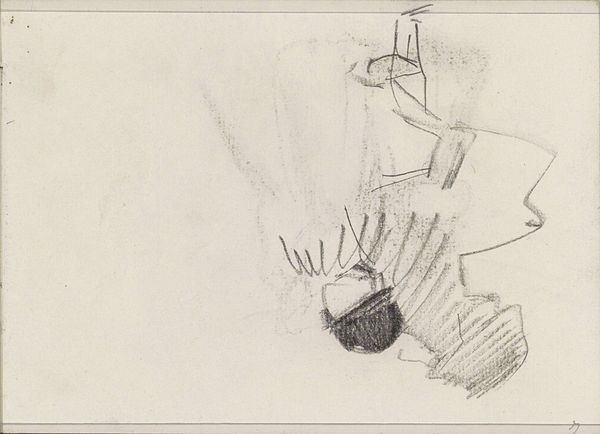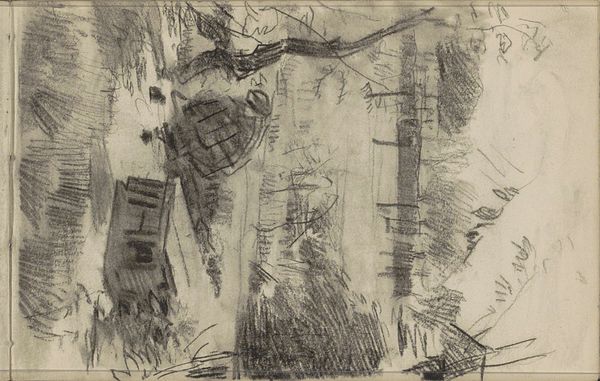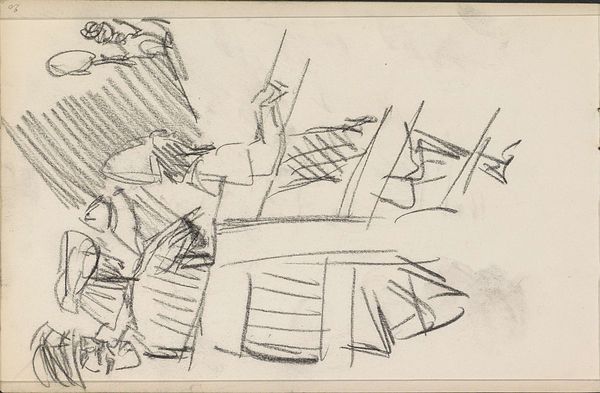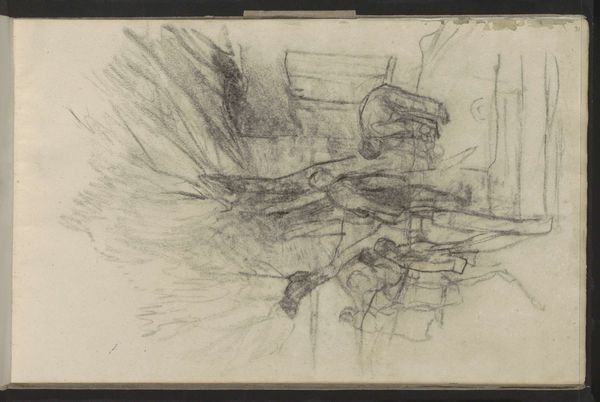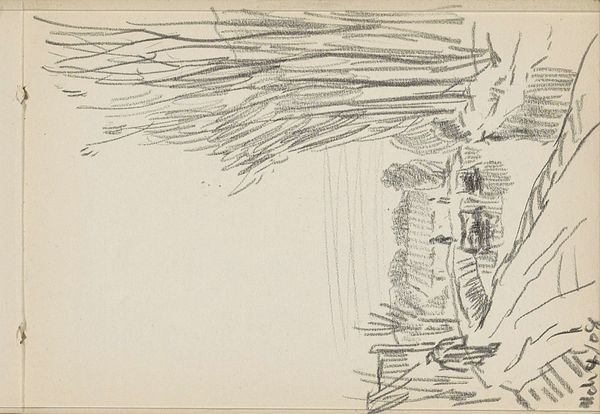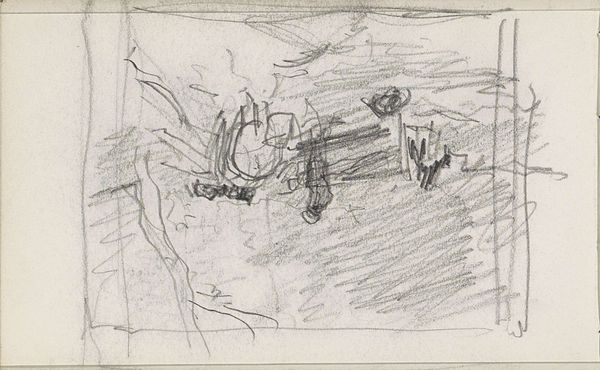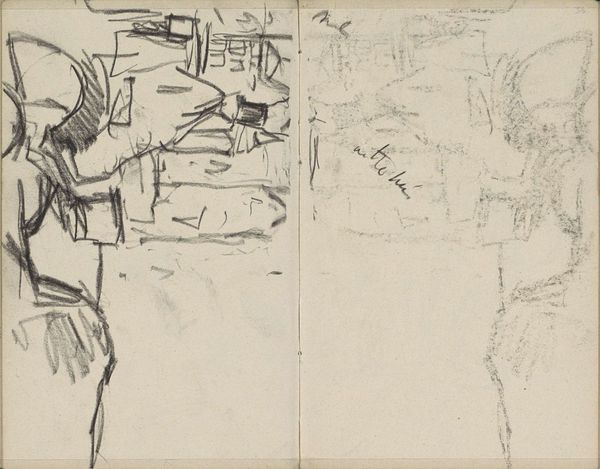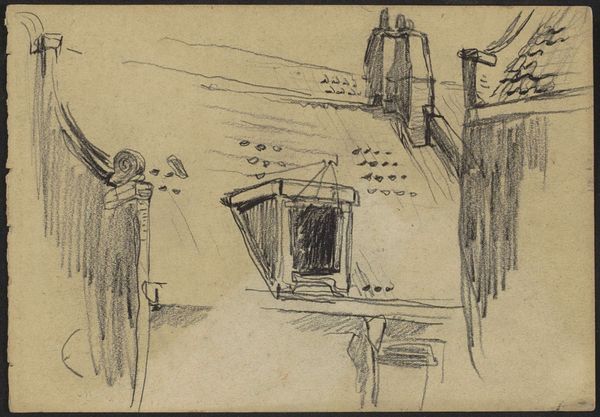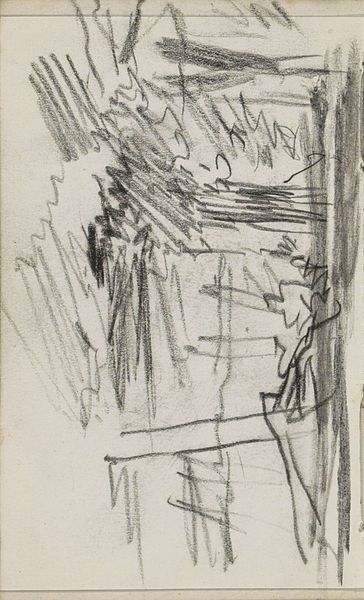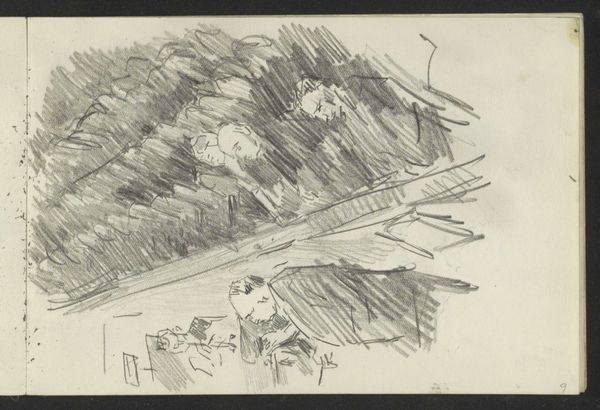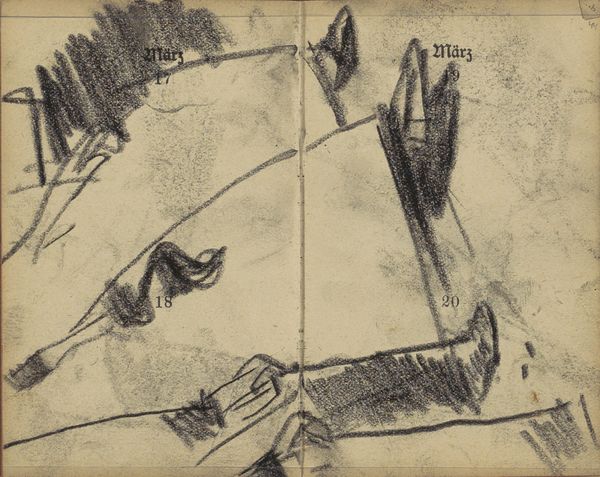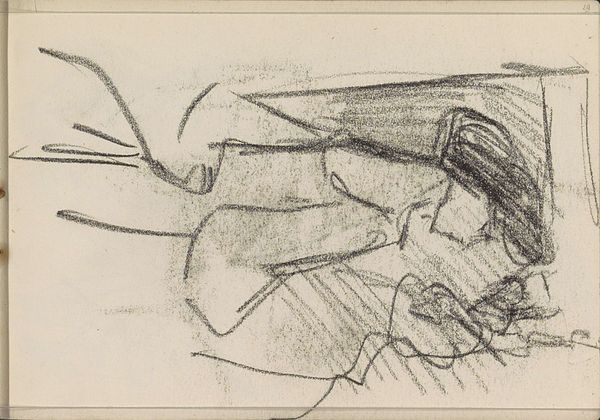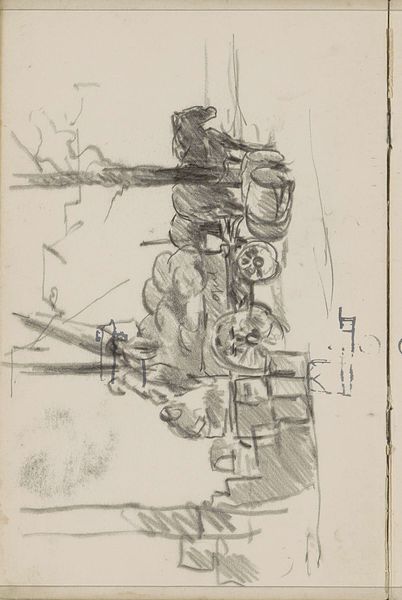
Copyright: Public Domain: Artvee
Curator: Look at this startling image by Karl Wiener, titled *Deutscher Soldat im Trommelfeuer*, or “German Soldier in a Drumfire”, created in 1942. Editor: My first impression is just pure, raw fear. The composition, with its fractured planes and claustrophobic geometry, immediately traps the viewer in that same moment of terror with the soldier. Curator: Yes, the fragmented, almost cubistic, style reflects the Expressionist movement and embodies the psychological trauma of warfare. You see how Wiener uses stark realism to depict a soldier overwhelmed by the horrors of what appears to be relentless shelling? Editor: Exactly, it's a masterclass in using formal elements to convey psychological experience. The lines are frantic, the shading harsh. This isn’t just a literal depiction of war; it’s an evocation of existential dread. The dark gray color represents bleak and desolate times. Curator: The soldier's wide-eyed gaze, his mouth agape, these are universal symbols of shock and horror. Even more haunting when you recognize the symbolism of the steel helmet as futile protection against the all-consuming destruction. It evokes countless generations confronting chaos. Editor: And it's all done with such a limited palette – almost monochromatic. Wiener brilliantly contrasts the solidity of the geometric forms with the ephemeral nature of the exploding shells, visualized as these ascending strokes of charcoal or graphite. Curator: It serves as a stark reminder of the human cost of conflict and how that experience is embedded in our collective consciousness. The cultural weight of these symbols — the soldier, the explosions — remains relevant even today. Editor: For me, analyzing the composition itself is powerful enough. This drawing stands as an effective representation of how human beings respond to chaotic stimuli by highlighting the fractured, anxious nature of existence. The image lingers in the mind. Curator: It certainly does. Wiener gives visual form to a feeling that, unfortunately, resonates across history. Editor: An example of pure expression and a poignant case of design following feeling.
Comments
No comments
Be the first to comment and join the conversation on the ultimate creative platform.

